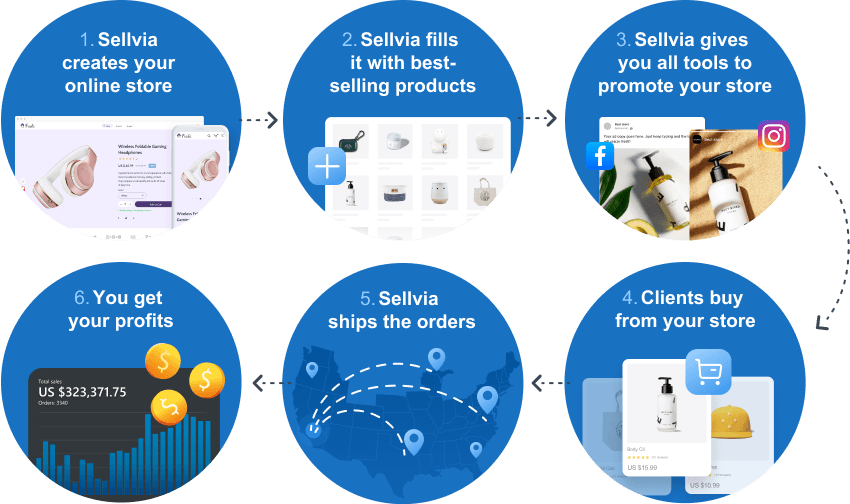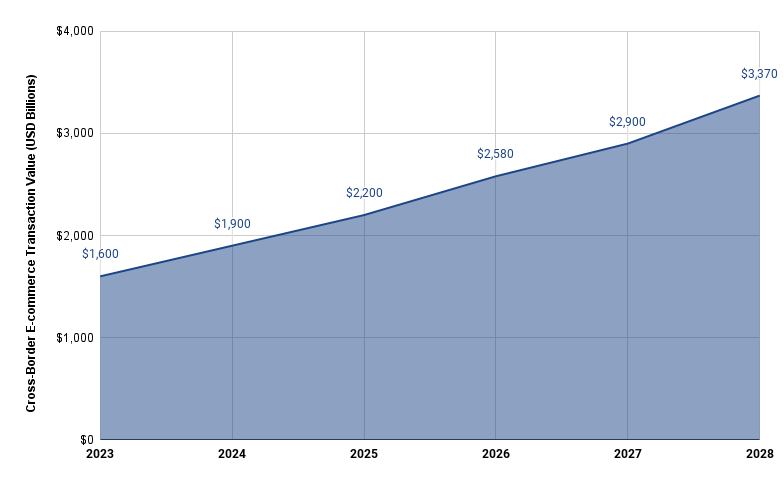How To Evaluate The Customer Service And Support Specifications Of An Amazon Seller, Shopify And Wordpress Dropshipping Service To Us Markets
Evaluation of customer service and support for dropshipping in the U.S. marketplace on Amazon Seller Shopify, WordPress (WooCommerce), or WordPress is vital since customer satisfaction is contingent on responsiveness, efficient communication as well as dependable resolution of issues and so on. What is the best way to evaluate the support and customer support capabilities.
1. Amazon Seller
Amazon's Customer Service Policy
Strict Policies on Customer Communication: Amazon has strict guidelines on how and when you can communicate with customers. Customer inquiries are expected to be answered within 24 hours. This is an extremely difficult job.
FBA sellers save time by Amazon's FBA managing returns and refunds. For Merchant Fulfilled Network (MFN) you'll have to handle returns, refunds, as well as questions directly, which will require efficient customer service processes.
Support for Sellers:
Seller Support Services Amazon provides support for sellers through its Seller Central platform. You can access FAQs, resources and email or live chat support to resolve problems like account management, ordering issues and policy questions.
Amazon makes sellers accountable for parameters such as the Order Defect Response Time and Rate. Poor customer service may result in account suspensions. A reliable customer service is, therefore, essential.
Amazon Sellers - Steps for Assessment
Examine your response: Read Amazon's customers' response time requirements for their customers and make sure you have the bandwidth or other tools to meet these requirements (such automated response systems).
Return Handling: If using MFN, make sure that your supplier or fulfillment partner provides support for returns. If you're using FBA, Amazon will handle returns, but it's important to be aware of any issues to ensure that customers are satisfied.
Customer Service Tools: Ensure you're familiar with Seller Central's tools for handling disputes, refunds, and general support questions. Think about using third-party tools when you require additional support to meet Amazon's strict response requirements.
2. Shopify
Applications for Customer Service
Shopify integrates with customer support tools like Gorgias Zendesk Re
The program provides an integrated dashboard for managing customer inquiries across various channels, such as chat, email, and social media.
Automated Communication: A lot of apps available on Shopify provide automated replies, chatbots and FAQs that can aid customers to quickly find answers to frequently asked questions.
Shopify lets you personalize your email messages. They include confirmations of your orders and emails regarding abandoned carts, and subsequent emails. This helps you build stronger relationships with your customers while maintaining high levels of customer satisfaction.
Tracking orders and sending notifications:
Shopify's real-time notifications enable customers to receive updates about their orders, shipping status, and tracking of delivery statuses. Transparency helps reduce the amount of inquiries from customers.
Customer Order Status Page: Shopify lets customers view their order status directly through an order status page, which reduces the requirement for them to reach out to support.
Evaluation Steps for Shopify:
Check out the Apps Available. Gorgias provides omnichannel service and is directly integrated into Shopify.
Shopify offers a range of customizable options, including chatbots as well as automated responses.
Support for after-sales: Discover whether your website offers services for customers, including returns labels as well as easy refund processing using third-party applications. Shopify integrations simplify the return and satisfaction of customers.
3. WordPress (WooCommerce),
Customer Service Plug-ins
WooCommerce has a number of plugins for live chat and help desks you can integrate directly onto your site. They include Zendesk and Zendesk Help Scout. These tools offer tickets for customer service as well as live chat and knowledge bases.
Automated Chatbots - For quick answers you can utilize AI based chatbot plug-ins (e.g. Tidio, ChatBot), which streamlines customer interaction and enhances the speed of response.
Email Notifications WooCommerce provides customized email notifications that contain orders confirmations, shipping details and delivery. Customers can thus be informed about their orders.
Returns tracking and tracking orders:
Order Tracking Plug-ins: TrackShip plugins provide customers with real-time tracking information, which they can access via your site. They reduce the amount of questions related to orders.
Returns and Refunds WooCommerce offers customized refund and return policies. WooCommerce plugins such as WooCommerce RMA can be used to automate returns. This feature helps you handle returns and reimbursements more efficiently.
WooCommerce Assessment Steps:
Examine plugins for chatbots such as live chat, ticketing and help. Help Scout and LiveChat are popular for WooCommerce and offer integrated customer support capabilities.
Automated Communication Automated Communication: Make tracking orders and status updates readily accessible for customers. This will reduce the number of queries regarding order status. TrackShip plugins can be used to automate tracking notifications.
Return and Refund Policies WooCommerce allows you to be flexible in establishing returns. Use plugins for return handling to make the process smoother for your customers and enhance the customer experience. Check out the pro Sellvia reviews for more recommendations including start online shop, dropshipping business, amazon ecommerce, selling thing online, website business for sale, drop shipping how to, ecommerce shop, start a dropshipping business, amazon commerce, creating an ecommerce website and more.

How To Calculate The Platform Fees & Cost Structure
Assessing Platform Fees and Cost Structures for Amazon Seller, Shopify, and WordPress (WooCommerce) is essential to comprehend the impact each platform has on profitability in the U.S. Dropshipping is the most lucrative business model. Here's how you can examine the costs and charges across all three platforms.
1. Amazon Seller
Platform Fees
Subscription Fees
Individual Plan: No monthly fees but $0.99 per item sold. For sellers with a low volume.
Professional Plan $39.99/month This includes access to Amazon's advertising tools and options, including Brand Registry.
Referral costs: Amazon charges a fee for referring customers based on their product category. This fee can range between 8% and 15% of the cost of purchase. For instance, electronics could be charged 8 and apparel could incur a 17% fee. This fee structure can affect dropshipper pricing strategies, specifically for high-value items.
Fulfillment through Amazon (FBA) Fees (optional) For dropshippers who make use of FBA, Amazon charges for the packing, picking, and shipping of orders. FBA costs vary based on the weight and size of the item, and also include storage costs. FBA may make fulfillment easier, however it also costs more.
Additional Costs:
FBA Storage fees are based on volumes, and they increase during peak season. Dropshippers must manage their storage costs in order to maintain the profit margins.
Advertising and Promotions - Sponsored products ads, Sponsored brands, and Amazon PPC campaigns are all cost-effective. Costs for advertising may vary greatly depending on factors such as competition, target keywords and advertising goals.
Other Fees - Costs that are related to returns, account chargesbacks and other optional services like Amazon's Premium Shipping, as well as Gift Wrapping.
Steps to Assess Amazon Sellers:
Calculate the total cost of subscriptions and Referrals Amazon's fee estimator will estimate your total cost per sale when you factor in fees for subscriptions and referrals, based on sales volume.
FBA is a great choice for dropshipping models however it is not the most suitable option for items that have high margins or a low weight.
Ad Spend Requirements: Determine the budget you have set for PPC advertising to determine whether Amazon can produce enough traffic and conversions using your budget.
2. Shopify
Platform Fees:
Monthly Subscription Fees
Basic Plan: $39 per month, including essential e-commerce tools.
Shopify Plan - $105 per month. This includes advanced reports, reduced transaction fees and more.
Advanced Plan : $399/month, with more detailed report.
Shopify Plus: Pricing starts at $2,000 per month for enterprise-level dropshipping businesses.
Shopify charges 2,9% plus $0.30 when making online payments made with credit cards on the Basic Plan. Higher plans offer lower costs. Shopify will charge an extra 2percent if you choose to use an external payment processor in lieu of Shopify Payments. Shopify also charges 1% per transaction for the Shopify Plan and 0.5% for Advanced when you opt to utilize a third-party service instead.
Additional Costs
Fees for payment gateways Third-party transaction fees payment providers such as PayPal or Stripe may be higher and can differ from one provider to provider. This can influence the margins of your profits.
The cost of plugins and apps: Many dropshipping apps, like Oberlo or Spocket as well as customized apps for customer service, marketing, and analytics charge monthly. These apps can cost up to $100+ a month in costs.
Costs of Advertising. Shopify stores often depend on advertising from outside sources like Google Ads or Facebook Ads. The costs can vary significantly based on the objectives of the campaign target audience, the platform and algorithm.
Shopify does not cost for themes or design. Premium themes are offered at a cost of between $100 to $350 in advance. If you're looking to create a custom store and themes, or custom development will cost more.
Assessment Steps for Shopify:
Estimate the cost of transaction and subscription costs. Find out the Shopify plans are best suited to your profits and sales volume. Calculate expected costs for transaction fees based on the average sales volume and payment method.
Consider the cost of app purchases Consider the requirements of your app to dropship, marketing, and order fulfillment. It is possible to keep your monthly costs down by only using essential apps.
Budget for Advertising: Create spending on advertising based on your market. Shopify dropshipping typically relies on ads that are paid for acquisition.
3. WordPress (WooCommerce).
Platform Fees
WordPress Hosting: WooCommerce requires hosting, that varies depending on the provider. Hosting for basic hosting typically costs between $10-$25 per month, while managed WordPress hosting for high-traffic or scalable websites can cost up to $200+ per month.
WooCommerce Plugin WooCommerce as a whole is absolutely free. But premium plugins may cost a lot.
Domains and SSL Costs: Typically, $10 to $15 per year per domain, and $50 to $100 per year per SSL certificate if it is not part of the hosting package (many hosting providers offer SSL certificates for no cost).
Additional Costs
Fees for Payment Gateways: Payment processors such as Stripe and PayPal typically charge about 2.9 percent plus $0.30 for each transaction. WooCommerce accepts several payment processors. The charges charged could therefore vary based on the provider.
Premium Extensions and plugins: WooCommerce core functionality is extremely basic. Dropshippers usually require additional dropshipping plugins like AliDropship (or Spocket) as well as other tools for managing orders. These plugins generally cost between $10 and $100 per month. However, some premium extensions could need a one-time fee or an annual charge.
Theme and Customization Costs The themes offered by WooCommerce range between $50 and $100 for premium themes. If you're looking to create a unique look for your store, customization of themes and the development process can cost a lot.
Security and Maintenance costs Customers of WooCommerce have the responsibility to upgrade their sites as well as add security (e.g. firewall plug-ins) and backups, and this can cost between $10 and $50 per month.
WooCommerce - Steps to assess
Calculate the cost of hosting and plugins Select a hosting service according to your expected number of sales and traffic. Examine the cost of any important plugins, as well as any additional features required for dropshipping.
Compare the costs of payment gateways to cut down on transaction costs. Find providers that are well-known and trusted among U.S. clients.
Budget for Maintenance of Websites Consider the expenses related to backups, security, and ongoing maintenance of your website. Decide if you require a programmer for updates and problem-solving. Take a look at the most popular Sellvia for site guide including build an ecommerce site, make an online store, ecommerce business for sale, create and online store, sale business online, build an ecommerce site, online business to buy, dropshipping products, best ecommerce platform, electronic commerce and more.

Comments on “Handy Methods To Picking Sellvia Amazon Seller Dropshipping Services”